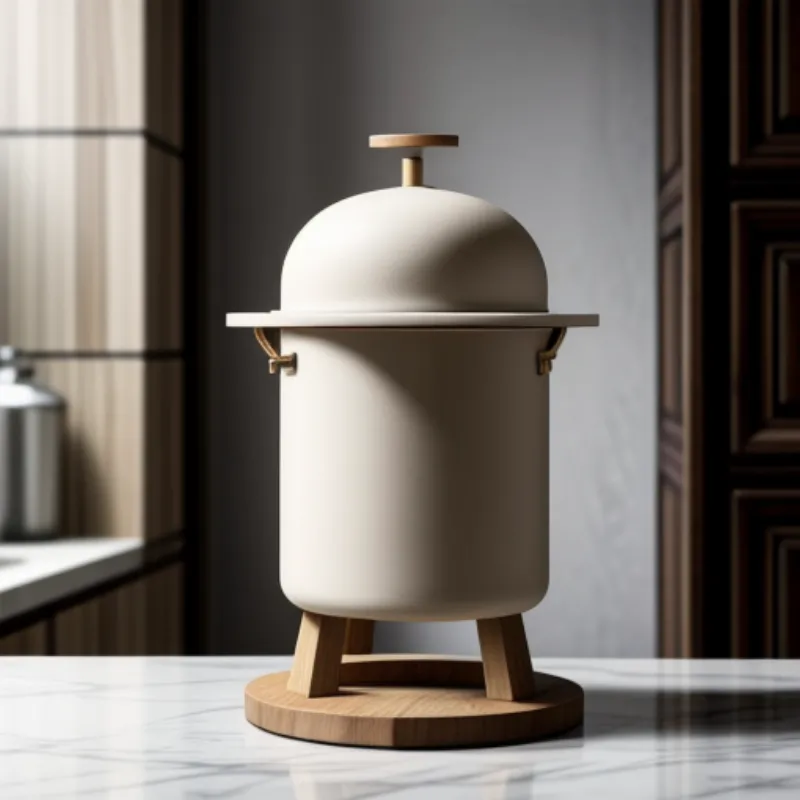Have you ever wondered how chefs achieve those velvety smooth sauces and perfectly clear soups? One of their secret weapons is a conical strainer called a chinois. While it might sound fancy, making your own chinois at home is surprisingly simple and rewarding. In this step-by-step guide, we’ll show you how to craft your own chinois and impress your family with restaurant-quality dishes.
What is a Chinois and Why Do You Need One?
A chinois, pronounced “shee-nwah,” is a fine-mesh strainer shaped like a cone. It’s used to remove even the smallest particles from liquids, resulting in silky smooth sauces, soups, and custards.
Imagine serving a luscious raspberry coulis without pesky seeds or a crystal-clear consommé that’s the envy of every guest. That’s the magic a chinois brings to your kitchen!
Gather Your Ingredients for Chinois-Making Success
Ready to embark on this DIY culinary adventure? Here’s what you’ll need:
Materials:
- Fine-mesh metal netting: Look for stainless steel netting with a fine weave, ideally around 50 mesh or higher. You can find this at hardware stores or online.
- Heavy-duty wire cutters: These will be your trusty sidekick for shaping the netting.
- Tin snips (optional): Useful for cutting thicker wire if needed.
- Work gloves: Protect your hands while working with sharp materials.
- Tape measure or ruler: For precise measurements.
- Marker: To mark your netting before cutting.
- Heavy-duty staples or wire to secure the cone (optional): Depending on your netting, you might need these for extra reinforcement.
 Making Chinois Materials
Making Chinois Materials
Let’s Get Crafting!
Now that you have your tools assembled, let’s dive into the step-by-step process of making your own chinois:
Step 1: Measure and Cut the Netting
- Determine the desired size of your chinois: A good starting point is a cone with a 6-8 inch diameter at the top and a height of 8-10 inches.
- Calculate the circumference of the cone’s base: Multiply the diameter by pi (approximately 3.14).
- Cut a rectangular piece of netting: The length of the rectangle should be equal to the circumference you just calculated, and the width should match the desired height of your cone.
Step 2: Shape the Cone
- Roll the netting into a cone shape: Start from one of the shorter ends of the rectangle and gradually overlap the netting to form a cone.
- Adjust the tightness as needed: You want a snug fit but also enough space for the cone to stand upright.
- Secure the overlapping edge: Use heavy-duty staples or wire to secure the seam of the cone. If your netting is malleable enough, you might be able to simply tuck the edge in place.
Step 3: Reinforce the Top (Optional)
- Cut a circle of netting: The diameter of the circle should be slightly larger than the opening of your cone.
- Place the circle on top of the cone: This will act as a reinforcement and prevent the cone from collapsing inwards.
- Secure the circle to the cone: Use staples or wire to attach the circle securely.
Step 4: Finishing Touches
- Inspect your chinois for any sharp edges: If you find any, carefully smooth them out using a file or sandpaper.
- Wash your chinois thoroughly with soap and water: This will remove any debris or residue from the manufacturing process.
 Homemade Chinois
Homemade Chinois
Congratulations, You’ve Made a Chinois!
You now hold in your hands a testament to your culinary craftsmanship – a homemade chinois ready to elevate your cooking game!
Chef Emily’s Tip: When using your chinois, place it over a bowl or pot to catch the strained liquid. For extra stability, you can set it inside a larger bowl to prevent it from tipping.
FAQs: Chinois Conundrums Solved
Q: Can I use cheesecloth instead of metal netting to make a chinois?
A: While cheesecloth can be used for straining, it doesn’t provide the same fine filtration as a chinois. It’s best suited for tasks like straining yogurt or making nut milk.
Q: How do I clean my chinois?
A: Hand-washing your chinois with warm, soapy water is recommended. Avoid using abrasive cleaners or scrubbers, as they can damage the fine mesh.
Q: What else can I use a chinois for besides sauces and soups?
A: The possibilities are endless! Use your chinois to strain jams and jellies, clarify butter, make smooth custards, and even filter homemade liqueurs.
Ready to Put Your Chinois to the Test?
Now that you’re a chinois-making pro, why not impress your family with a restaurant-worthy dish? Try making a velvety smooth tomato soup, a decadent chocolate sauce, or a refreshing fruit coulis using your newfound culinary tool.
Share your culinary creations with us! We’d love to see how you’re putting your homemade chinois to work. Tag us on social media [@FamilyCuisine] and let’s inspire each other in the kitchen!
